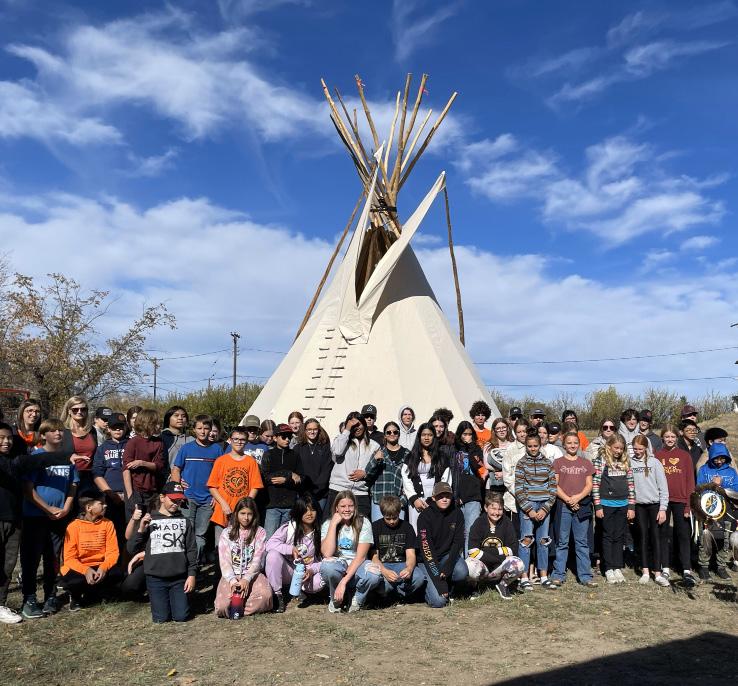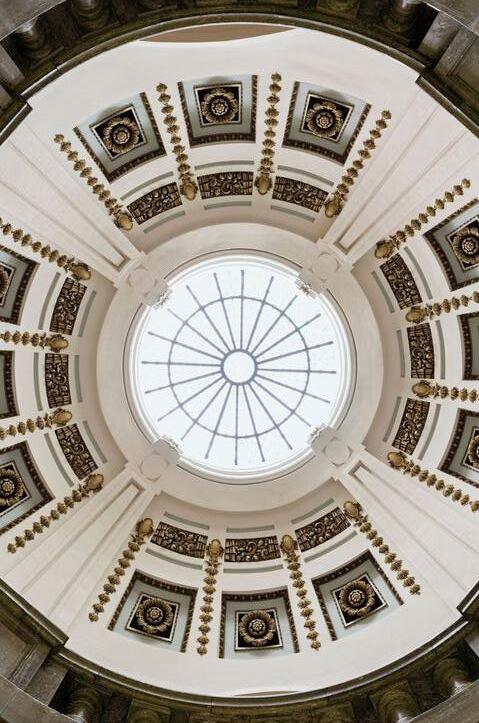




Government House, Regina June 18, 2025 HER HONOUR THE HONOURABLE BERNADETTE MCINTYRE

- 2025June 18th, 2025
5:30 pm 5:25 pm
6:30 pm
Arrival of Her Honour
Bernadette McIntyre, Lieutenant Governor of Saskatchewan Guests are seated Award Presentations
Reception


Her Honour Bernadette McIntyre Lieutenant Governor of Saskatchewan

Welcome to the 2025 Lieutenant Governor’s Heritage Awards in historic Government House in Regina, which is in Treaty 4 Territory and homeland of the Métis. As our monarch’s representative in Saskatchewan, I am pleased to extend greetings on behalf of His Majesty King Charles III, King of Canada.
Thank you to Heritage Saskatchewan for administering this annual program that rewards excellence in heritage preservation. As well, I am grateful to the staff and board of directors for their ongoing advocacy.
It is my privilege to present the Lieutenant Governor’s Heritage Awards. Congratulations to the 2025 recipients on this special recognition. Thank you for your considerable contributions towards preserving and celebrating our province’s rich heritage.
To all in attendance, please accept my best wishes for an enjoyable and memorable event.

Bernadette M. McIntyre Lieutenant Governor Province of Saskatchewan


Heritage Saskatchewan, Chief Executive Officer

Thank you for joining us today to celebrate our diverse heritage and to honour the people, businesses and organisations that continue to demonstrate that heritage remains an important part of revitalization efforts.
Heritage is both tangible and intangible and is evident in the places that we value, the traditions, the stories, rituals, crafts, knowledge, expressions, skills, artifacts, our interaction with nature, and so much more. It shapes our identity and our relationships with others and is constantly evolving from one generation to the next. Our diverse cultural heritage is important to us as Canadians and to those who live and work in our province. As a driver of our individual and collective social, cultural and environmental wellbeing, heritage contributes to the growth of Saskatchewan’s economy through tourism experiences, visits to heritage sites and museums, the development of craft industries and the employment of tradespeople, other professionals, and local businesses, all providing much need assistance in heritage conservation. It is important to take time to recognize the projects celebrated today, reminding all of us of our rich diverse cultural heritage and its value to communities.
On behalf of Heritage Saskatchewan, I extend my thanks to everyone who submitted projects for consideration. The excellent quality of the submissions is a testimony to those who work and volunteer in our industry and special thanks to our jury for their work in determining this year’s recipients, which was not an easy undertaking.
And finally welcome and thank you to Her Honour the Honourable Bernadette McIntyre Lieutenant Governor of Saskatchewan, who serves as our Honorary Patron and for supporting our work.

Ingrid Cazakoff CEO
The Court of the King’s Bench was constructed in 1907-1908 by architects Storey and Van Egmond in Battleford Saskatchewan. This municipally designated building received both internal and external conservation to address requirements related to the accessibility, safety, and function of a modern Court House while maintaining as much heritage character as possible. Care was taken to achieve the Court House building functional requirements, while preserving the overall heritage appearance, both on the exterior and the interior.
The original wood windows required replacement to improve weather tightness, reduce drafts and improve acoustic separation from the exterior. The latticed windows were a significant architectural feature in the arched pilasters of the brick and Tyndall Stone exterior, as well as the projecting dormers at the Mansard roof.
The building interior contains extensive dark stained woodwork, including Court Room fittings. Many of the original wood features were salvaged, relocated and reconfigured to meet modern functional requirements in the current project. Significant wood features were salvaged and reused in other parts of the courtroom, retain material and heritage significance, while new additions for current Court requirements were kept sympathetic with the original.
Adero Architecture
Carmont Construction Ltd. (Guardrail / Handrail Renovations)
KIM Constructors Ltd. (Court Room Renovations)
Ministry of Justice and Attorney General – Court Services
Ministry of SaskBuilds and Procurement – Project Planning & Delivery; and Construction Project Supervision


REPOINTING & MASONRY REPAIR
Government House, located in Regina, has served many functions since it’s construction between 1889 and 1891. Initially it served as residence for the Lieutenant Governor, then a convalescent home for WWII veterans. It currently houses the Office of the Lieutenant Governor, office space for Government House employees, plus a museum.
The work on Government House entailed rehabilitation of exterior façade, with a full cleaning and repointing of the brick work, including the replacement of badly damaged bricks and repairing the mortar and Tyndale stone where needed. Throughout the project, consistent reviews and detailed documentation were conducted to capture any work done to the building; this allows future work to be informed of and by the changes to the building.
The rehabilitation of Government House’s façade exemplifies the importance of maintaining heritage buildings to ensure their continued life cycle. These methods not only protect heritage elements but also add to the sustainability of the building which allow the building to continue to serve as the official office space for Saskatchewan’s Lieutenant Governor, plus a museum and gallery which provide educational programs, cultural events, and exhibits that enrich the public understanding of Saskatchewan’s history.
Brownlee Beaton Kreke Structural Engineers
Ministry of SaskBuilds and Procurement
P3 Architecture Partnership
TransCanada Contracting
Wilhelm Masonry Inc.
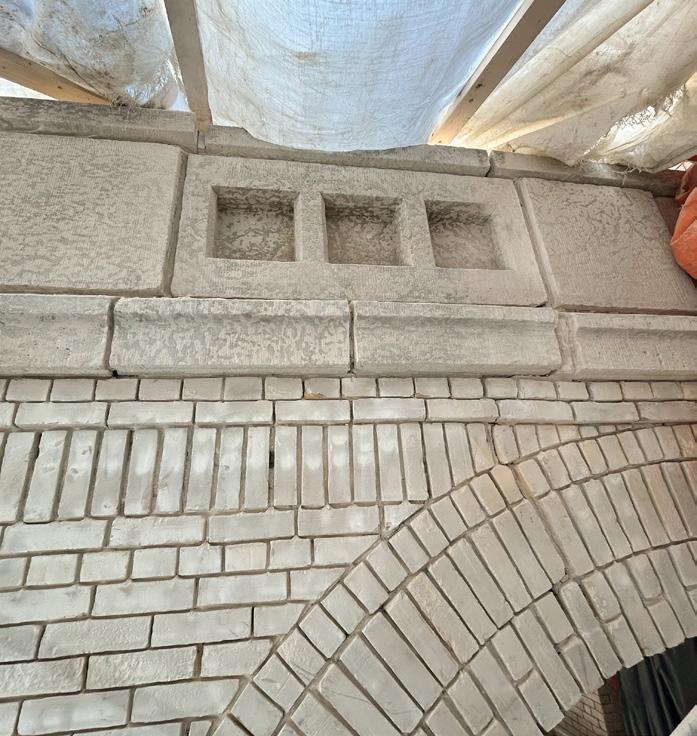
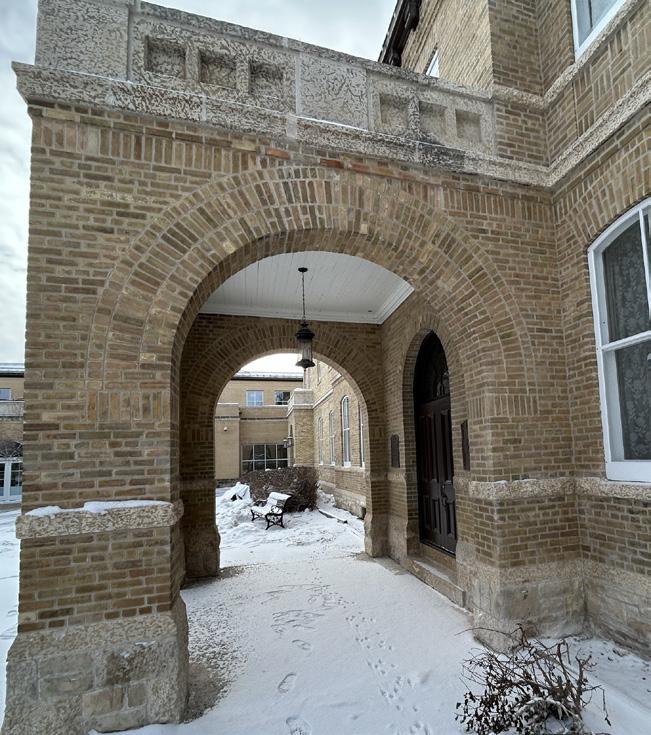
The John Hopkins Regina Soundstage, originally known as the Normal School, was constructed from 1913-1915 in the Collegiate Gothic style and designed by the well-known architecture firm Storey and Van Edmond.
New stones, hand carved by skilled masons at Brxton Masonry and aided by existing documentation and 3D scans of the existing stone, replaced cracked stone masonry. The stones were discreetly pinned and epoxied in place to maintain and extend the structural integrity of the entrance arches, window quoining and string courses, enhancing both strength and aesthetics of the facade. When bricks required replacement at visible areas of the façade, existing bricks were taken from parts of the building with lower visibility for seamless replacement. Bricks removed from the rear of the penthouse were replaced with a compatible brick. Before addressing eroding mortar, a sample of the existing material was taken to test its composition and hardness to inform the choice of replacement mortar.
This project was conducted with the intention of continuing the lifecycle of the building and protecting heritage elements through minimal intervention.
Brxton Masonry
Inc.
Ministry of SaskBuilds and Procurement
P3 Architecture Partnership
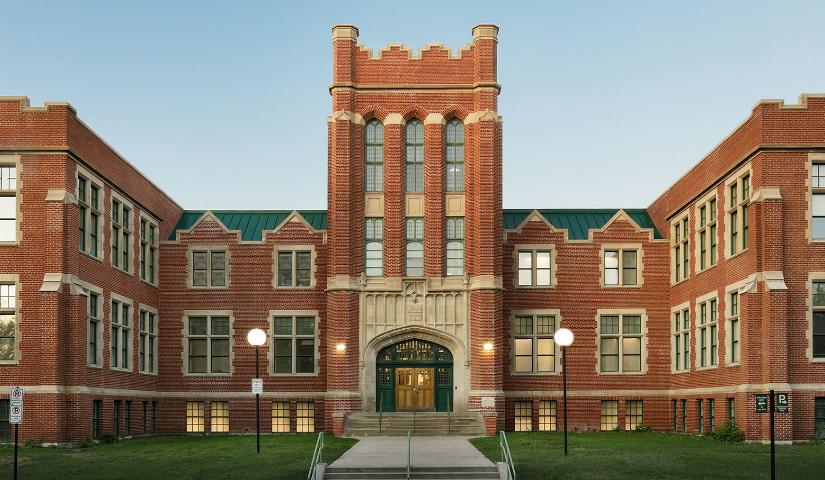
The John Nugent Studio in Lumsden stands as a testament to the powerful intersection of art and architecture within a community. Architect Clifford Wiens received a Massey Silver Medal for the studio’s design in 1967. The studio was also the creative hub of John Nugent, a prominent Canadian sculptor, who used the studio for large-scale abstract metal casting work, and for his candle making.
The studio was designated a Provincial Heritage Site in 2005 in recognition for both its architecture and association with John Nugent. The ongoing conservation efforts ensure that this important piece of architectural and artistic history is preserved for future generations.
The project safeguards a unique piece of architectural and artistic heritage, creating a potential cultural hub and tourist attraction. In 2020, a dedicated group of community volunteers undertook a significant general site clean-up. Community involvement in the clean-up, restoration and development of walking paths demonstrates a strong sense of ownership and pride. The display of over 20 of Nugent’s large-scale sculptures are located along the Nugent Walking Trail, offering residents and visitors alike opportunities for cultural enrichment.
40+ Paving (Bruce Robinson)
Sherwood Coop Home Centre (Communities in Colour)
Thor Mechanical


This award recognises commitment to the conservation of Saskatchewan heritage places, including archaeological sites, buildings, cultural landscapes and engineering works, ensuring that the heritage value of these places is protected. It also considers projects that protect the heritage value of a place and are innovative in the approach to achieving this.
Intangible cultural heritage (ICH) is the underlying fabric of our lives – stories, skills, traditions, ways of doing things, practices, representations, ways of speaking, and ways of interacting with each other and the environment. It does not always leave a material record behind, but rather is passed from person to person and from generation to generation. It is so deeply embedded in our cultural identities that we oftentimes take it for granted. ICH does not reside in the past. It is those elements of the past which continue in the present. It informs who we are and what we want to be. The value of such living cultural expressions is related to identity, memory and remembrances, belief and symbolism, nature and environment, knowledge system, and sites.

Carina LaMarche, Details Photography Studio*
Government House
Heritage Saskatchewan’s Awards Jury
Jennifer Losie, Graphic Designer
Jim Gallagher, Pianist
Shannon Coleman, Indulgence Fine Foods & Catering
The Office of the Lieutenant Governor of Saskatchewan
*A dedicated link with the award photos will be made available to award recipients following the event.
Heritage Saskatchewan’s work traverses the traditional homelands of the Nehiyaw/Nehithaw/ Nehinaw (Cree), Nahkawe (Saulteaux), Dakota, Lakota, Nakota, and Dene, the homeland the Michif (Métis), which are territories covered under Treaty 2, Treaty 4, Treaty 5, Treaty 6, Treaty 8, and Treaty 10, a place many cultures now call home – Saskatchewan.
We are committed to building relationships with Indigenous communities and learning to live on these lands in a better way.
The Court of King’s Bench, located in Melfort, built in 1928, was designed by Architect Maurice Sharon of the office of the Provincial Architect in the Colonial Revival style.
In the 1970s the original wood sashes and interior casement storm panels were replaced with two layers of metal storm panel windows and were ready for replacement. This work provided the opportunity to restore the building to better reflect its original character and appearance while taking advantage of modern materials and components to improve the buildings comfort and performance.
The overall approach was to retain the original oak woodwork, the existing character and patina that is part of the story of the building. The new windows were inserted in a way that had no impact on the masonry of the building on the exterior and kept the original patina of window trim on the interior.
Heritage buildings are more than just functional spaces, they are longstanding elements of the community; physical presences that have shaped the local environment and contributed to the story of the community for generations.
KIM Constructors Ltd. Ministry of SaskBuilds and Procurement Moore Architecture Consulting Group Ltd.


Established in Swift Current in December 1941 as Royal Air Force No. 39 Service Flying Training School, Hanger #3 was incorporated into the British Commonwealth Air Training Plan in 1942. Only three of the roughly one hundred hangars built as part of WWII RAF training still stand in the province today. Alongside hangars in Regina and Yorkton, Hangar #3 in Swift Current is the third.
For over two decades, Hildor Braun has undertaken extensive restoration and conservation work on Hangar #3, transforming a once-threatened wartime structure into a preserved, functional asset for the community and surrounding area. His work, much of it hands-on and self-funded, exemplify the type of hard-working dedication often required to accomplish worthwhile heritage related achievements. In the winter of 2024-2025, nineteen local aircraft rented space in Hangar #3. Hangar #3 remains in use today thanks to the commitment and efforts of Hildor Braun.
Virtually every aspect of the structure – windows, hangar doors, roof, framing, and exterior envelope – has been repaired or restored. This achievement is even more impressive given the hangar’s enormous size. Hildor Braun’s careful project management and dedication to authenticity have preserved the site’s heritage and current use.

Designed by renowned Saskatchewan architect Joseph Pettick, the building was completed in 1963 and is a landmark of modern architecture in the province. Commissioned and still owned by the Saskatchewan Power Corporation, the structure was intended to consolidate the company’s staff and operations into a single, centralized location. At the time of its completion, the SaskPower Head Office was the tallest building in Regina, standing as a symbol of progress and innovation.
As lead-up to refurbishing the SaskPower Head Office, all decisions were carefully considered for heritage value, and where it was not possible or practical to restore elements fully, efforts were made to preserve them through integration, documentation, display, or adaptive reuse to suit the current and future needs of users. The gold sunscreens removed by SaskPower staff had alternate sunshades created that referenced the original but respected user needs. Extensive effort was taken to recreate and repair the wheat-coloured brick veneer and replace the gold anodized aluminum window frames with a suitable alternative, as the original was no longer available. Tile work was preserved where it had not been previously removed.
The conservation of the building required balancing the heritage elements with the ways the building is used today. The customer drive-through lane was reclaimed as interior public amenity space, expanding the main level and creating a more connected, accessible main floor with distinct staff access on the building’s east façade. The fountain mechanics and basin were not salvageable, but due to the importance as a public amenity on the site, the flutes of the original fountain were preserved and placed into a rebuilt fountain design that addressed the technical wear and deficiencies of the original structure.
Brxton Masonry Inc. (Masonry Contractor)
Chinook Scaffold System Ltd.
Clearlite Glass Ltd.
Flynn Roofing
Nawkaw Canada
PCL Construction Management
Inc. (Construction Manager)
Regal Flooring Ltd.
Stantec Architecture Ltd.

The Ogema Grandstand, built in the 1920’s to serve as a structure for spectators to view ball and horse racing, has been a landmark for 100 years, and continues to be used for community events to this day. The original Grandstand was built with funds raised by the community through Agricultural Society prizes. The grounds continue to host the Ogema Agricultural Society Summer Fair each July.
In 2004, the grandstand was dedicated to Arleene Johnson Noga, an All-American Girls Professional Baseball League player from 1945-1948, who was raised in Ogema.
The Grandstand Restoration required extensive refurbishment, which required moving the entire Grandstand off the original pilings, onto the baseball field, repouring concrete foundation, and moving the Grandstand back. Structural wooden beams, exposed to the weather and elements for a century, were replaced where needed. At some point the original seats were covered with plywood, necessitating their restoration as well.
This conservation work allows the Ogema Grandstand to continue to serve the community and surrounding area, for sporting and cultural events, for many years to come.
Struthers Construction (Nick Struthers)
Ken’s Carpentry (Ken Klemenz)
Mary Struthers (Chairperson of Grandstand Fundraising Committee)
Chase Johnston Construction (Chase Johnson)
Donald Birg Construction
Killer Bead Welding (Derrick Deringer)
Ogema Agricultural Society (Shelanne Wiles, Past President)
Ogema Agricultural Society (Cara Olafson, Present President)
Ogema Colts Ball Club (Ted Struthers)
Ogema Regional Park Authority (Kyle Leonard, President)
Southern Electric (Ryan Arnesson)
Town of Ogema (Carol Peterson, Mayor)
Individuals: Gary Anderson & Peggy Tuchscherer, Keith & Stephanie Bacon, Bev Klemenz, Kevin Leonard, Pernell & Debbie Howe, Willie Fisher, Bill Bjornson, Roger Farr, Donald Schmidt

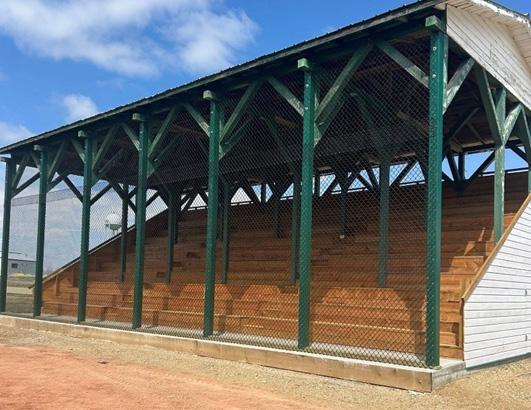
For 35 years Bill Schiller, Grant Schiller’s father, made knives and taught others to do the same. When Bill passed away suddenly in 2017, Grant could not stand by and let his dad’s legacy die with him. Having been taught by his father, Grant Schiller was determined to continue the knifemaking tradition where he resides in Carrot River.
Grant Schiller Knives offers hands-on knife-making classes centered on the traditional craft of custom knifemaking. The classes support the transmission and revitalization of traditional craft skills by teaching knife-making, a trade that took years to master, through hands-on workshops. The program promotes intergenerational learning, skill-sharing, and community engagement. It also helps safeguard a valuable craft and encourages its continuation as a living tradition, aligning with the core values of intangible cultural heritage.
This project engages individuals and families from across Saskatchewan and beyond, fostering learning, collaboration, and a deeper appreciation for traditional trades. Participants not only acquire a tangible product but also contribute to the safeguarding and transmission of the intangible cultural heritage of knifemaking - a skill deeply rooted in craftsmanship, mentorship, and hands-on knowledge sharing.
Grant and Lisa Schiller, Co-Owners, Grant Schiller Knives
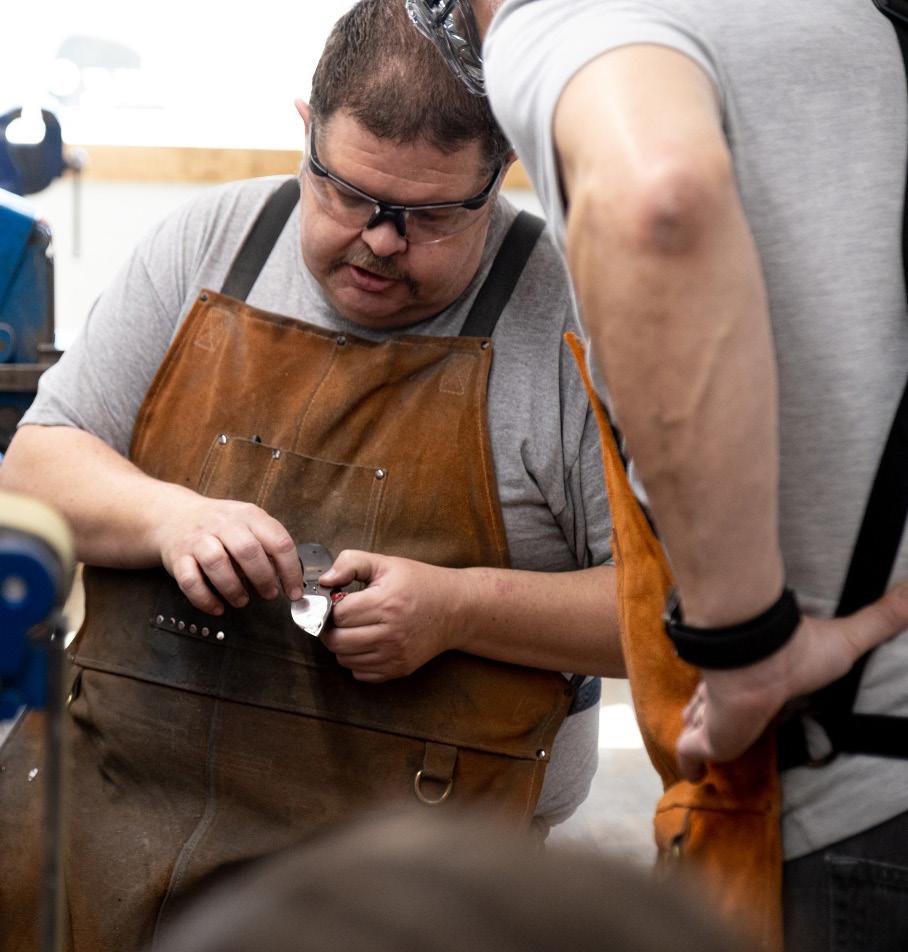
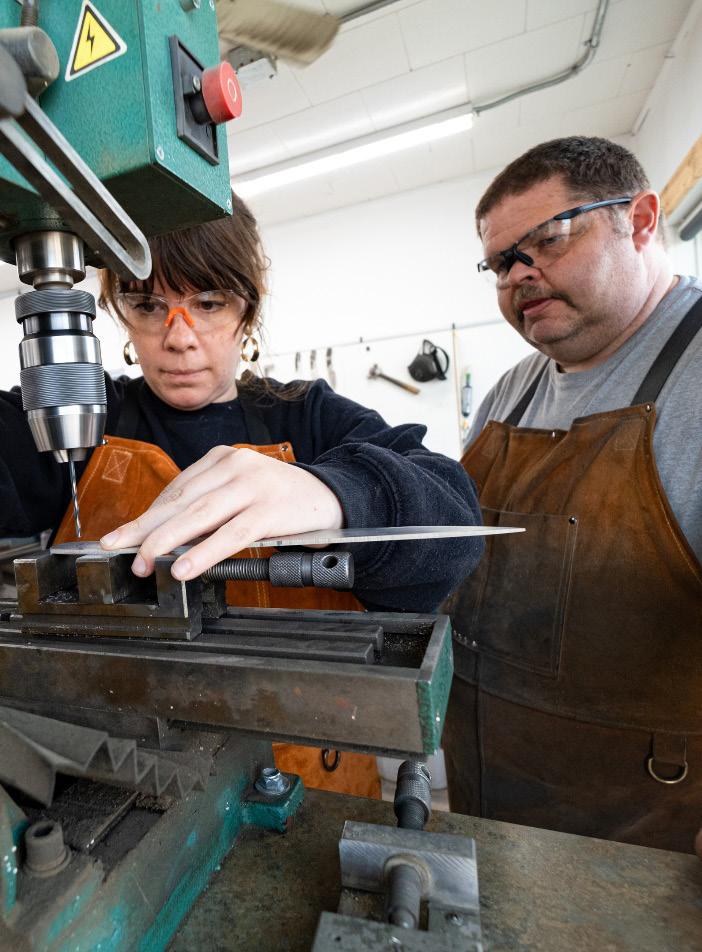
Notice Nature’s focus is to encourage participants to “look up, look around and notice nature.” The program operates across Saskatchewan through regional and local libraries and many participating organisations. Notice Nature includes a Guidebook Series, Saskatchewan-themed ID booklets available to participants including mammals, birds, insects & spiders, flowers, and trees & shrubs, farm animals, crops, and pollinators. It also has a Passport with over 400 activities relating to water, art, agriculture, culture, and sport.
New aspects in 2025 are the Historical Sites of Southern Saskatchewan and Historical Sites of Northern Saskatchewan guidebooks with a focus on cultural knowledge. The guidebooks have sections dedicated to re-imagining agriculture, community heritage, art in nature, Indigenous culture, and energy conservation. Examples from these sections include finding a local food forest; researching how bison impact the land; visiting a historic site and researching the settlement of a community; using leaves as stencils and drawing animals; attending a Pow Wow; making bannock; planning a screen-free afternoon with family; and starting a compost bin.
The success of Notice Nature is an example of a commitment to community engagement, and land stewardship. The program is delivered at no cost to communities across Saskatchewan and is facilitated through public libraries, schools, as well as Regional and Provincial Parks.
Partnerships for this project include many of Saskatchewan’s Regional Libraries and Regional Parks, numerous provincial organizations, and many other organizations, companies, and businesses.
For a full list of partners visit https://www.noticenature.ca/partners

The intent of this project was to invite the community out to pê-mêtawê, or “come and play” in nehiyawewin (Plains Cree). Traditional games are an important part of many Indigenous cultures as a tool for teaching, and Wanuskewin is a place that continues to share these teachings. This project was undertaken by Wanuskewin’s Visitor Services team, composed of Indigenous youth who work as interpretive guides and lead all programming, both public and private. The project not only benefited the community within the project timeline but provided the team the opportunity to improve the Traditional Games program for years to come. Playing games allows Indigenous people to connect with each other and connect with their ancestors through the oral tradition that allows these games to be transmitted across generations.
The games taught and shared are ones that have been passed down through oral history since time immemorial. Thousands of years ago, there were no school buildings for children to learn life skills - instead, Indigenous children learned physical, hunting, social, and survival skills through games.
The pê-mêtawê project highlights the importance of traditional games for Indigenous communities’ wellbeing and health.
Dancers (Graycen Thomas, Lawrence Roy, Elmer Tootoosis, Kandis Capulet, Adam Merasty)
Knowledge Keepers (Leah Dorion and Curtis Breaton)
Wanuskewin Heritage Park Staff & Summer Students
Traditional Games Fridays – Moccasin Game and nîmihitowin – Powwow Dancing

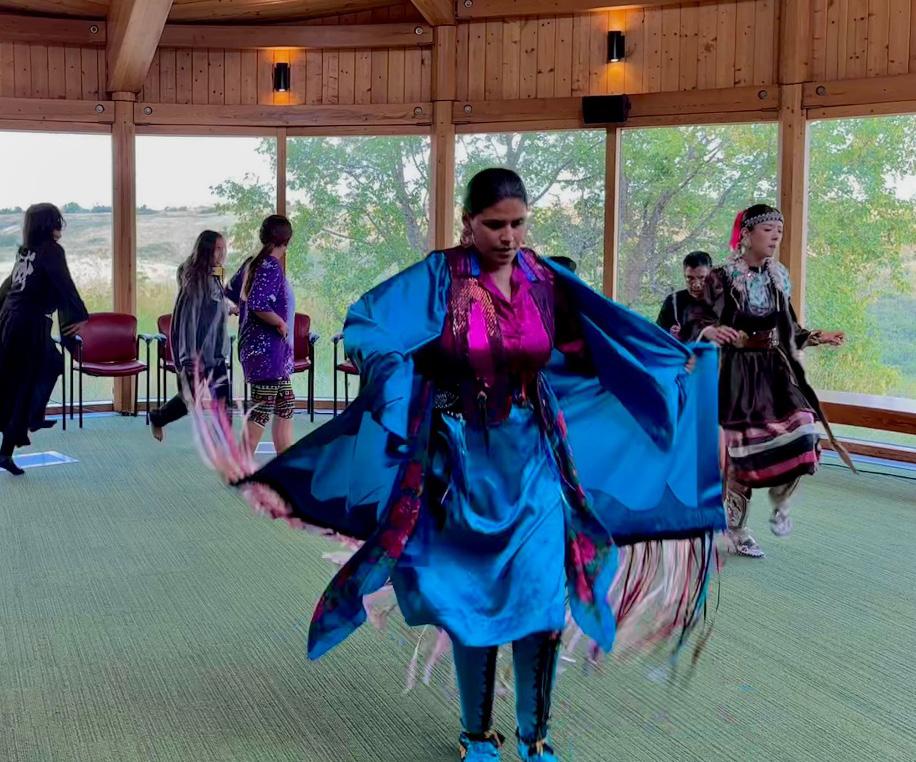
EXCELLENCE IN SASKATCHEWAN
MUSEUMS: AWARD OF MERIT
The Climax Community Museum (CCM) is committed to building a more inclusive audience through programming that supports reconciliation and celebrates the diversity of their community. They demonstrate this commitment through their relationship building, community service, and inclusive approaches to managing the museum. The CCM have invested the time to understand the needs of their community and have begun to build meaningful relationships. One of the relationships that has really driven their work and commitment to reconciliation is that between the museum and members of the Nekaneet First Nation.
Marina Gryde, curator at the CCM shared, “[w]e understand history is complex and still dominated by white perspectives and that as a museum board we strive to include and involve a broader diversity of the public and new partners including Indigenous communities, underrepresented or marginalized communities, and youth, LBGTQ2 to learn from and to better represent a diversity of interests and perspectives and values.”
The Climax Community Museum’s intent is to continue developing programming and hosting events for their broader community that embody diverse stories and histories, opportunities for the community to continue their education towards truth telling and reconciliation, and to bring more voices into their museum.
